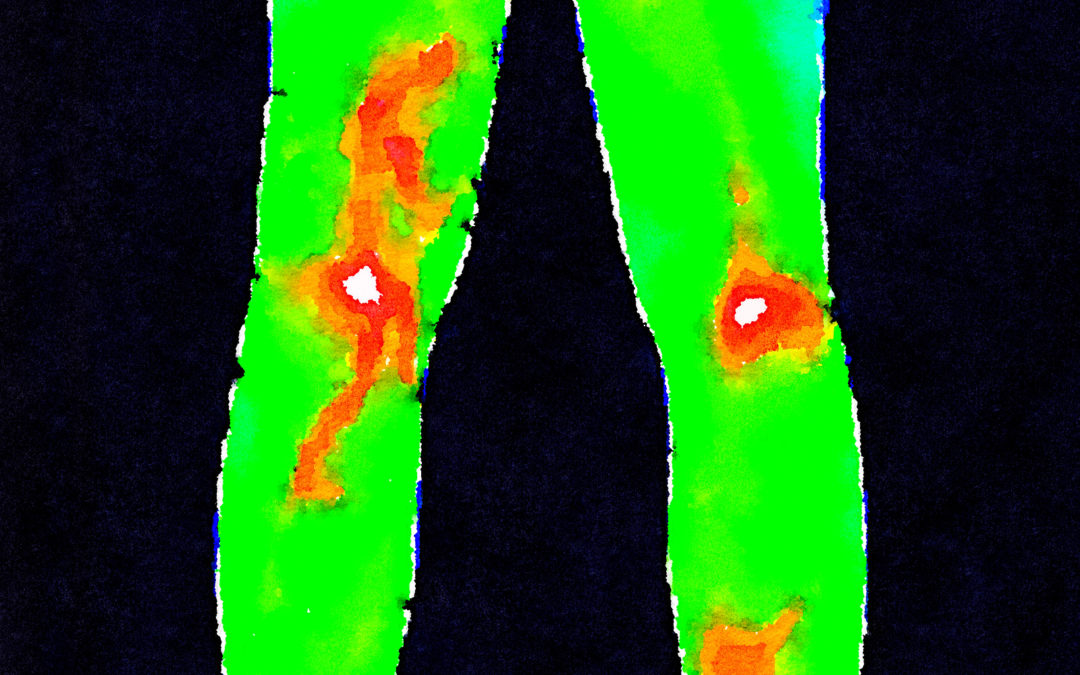Are your varicose veins getting worse? Many factors such as obesity and hormonal treatment can aggravate these bulging and twisted veins. You must have guessed from the title that heat is one of the factors that can cause menace. But do you know why? Let’s understand the effect of warmth on your varicose veins.
What are Varicose Veins?
Varicose veins are veins that are dilated, enlarged, or overfilled with blood. These veins are raised, swollen, and are red or bluish-purple in color. In some cases, varicose veins are just a cosmetic concern, while in other cases it may cause pain, swelling, throbbing, burning, and fatigue. In severe cases, varicose veins may cause ulcers or bleeding. There is no association between appearance and discomfort. Rather, larger twisted veins do not cause any discomfort, while damaged veins that are not visible can be extremely painful.
Varicose veins are a common occurrence, with almost 23% of adults affected by this condition globally. While anyone can get it, certain factors such as obesity, injury, a history of a clot, surgery of vein, history of varicose veins in family, pregnancy, and hormonal treatment increase the risk of varicose veins.
Heat and Varicose Veins
Varicose veins are swollen, tortuous, and large veins that are usually seen on the feet and legs. Your blood vessels have valves that allow blood flow only in one direction.
Veins carry blood from your extremities towards the heart. If valves fail to work, they cause pooling of the blood, causing them to enlarge. The pooling of blood in the legs exerts pressure on your veins, which weakens its walls, causing them to twist and distort. This may cause swelling and pain in the affected area.
If you have varicose veins, increased outdoor activity and hot spells can cause pain and swelling in your legs. When your body heats up it causes your blood vessels to widen, which allows more blood to flow into them. Generally, this is a cooling mechanism adapted by your body, but for individuals with varicose veins, this may prove to be a nightmare.
Additional swelling can cause more heaviness, pain, or fatigue in your legs. This happens due to the weakening of the vein’s walls. As the veins are weakened and distended, the increased blood flow can further dilate and even cause spontaneous bleeding in some cases.
Heat cannot cause varicose vein per se and only exaggerate the condition if you already have it.
Which Activities are Safe?
During the summer, it is advisable to stay in an air-conditioned room, away from heat. Moreover, moderate activities can improve your vein health. So, while you can enjoy the outdoor climate, it is advisable to avoid the sun when the temperature is at its peak. If you are going to be out for long try using a fan, sitting in the shade, or applying wet towels on the affected area.
In the wintertime, avoid soaking in a hot tub and other warm activities, but you may do so to a limited extent. The sauna can also be too intense, but a short session with the affected area covered with a cool cloth is safe. Alternatively, you can wash the affected area with cold water immediately after the sauna. Moreover, be cautious about the temperature of the thermostat and underfloor heating.
What You Can Do When the Temperature is High?
There are a few measures that can come to your rescue and help in managing varicose veins. Some of them are as follows:
- Drink plenty of fluid: Staying hydrated boosts the pumping activity of the veins, improving blood circulation. Dehydration triggers swelling of your legs and causes them to ache and cramp. Moreover, avoid alcohol as it may aggravate the symptoms of varicose veins and increase the risk of dehydration.
- Apply sunscreen: Exposure to the sun causes your skin to be loose and thinner, which aggravates varicose vein. To prevent this, use sunscreen and cover yourself up when exposed to the sun for a prolonged period of time.
- Elevate your legs: For immediate relief, elevate your legs at a 45-degree angle above the level of the heart for at least 15 minutes, especially if your condition gets worse during the summer. You can stretch your legs up the wall, place them on 3-4 pillows while lying down, or place them on a table. Propping the legs favors the movement of blood towards the heart, which aids in reducing fatigue and swelling.
- Exercise regularly: Cooling exercises such as surfing and swimming are the best options during the summer. You can flex your feet frequently if you are going on a long trip. Even a walk on the beach can be helpful. In addition to their cooling effect, these exercises aid in improving blood circulation.
- Prefer flat shoes: When you walk with flat shoes, your muscles work harder, which boosts blood circulation. Pumping of calves favors the flow of blood towards the heart.
- Use stockings: Compression stockings put pressure on the walls of the blood vessels, preventing pooling of blood in them, relieving pain and swelling associated with varicose veins.
- Use cold water: If you are feeling discomfort at the end of the day, showering with cold water could prove beneficial. Cold environments cause the blood vessels to shrink, alleviating swelling and redness.
Varicose veins are a source of discomfort for many, which can be aggravated during hot climates. Warm environments cause veins to dilate, which allows more blood to flow through. The increased blood flow can induce swelling and cause redness in the affected area. That is why in periods of high heat, it is best to stay away from the heat. Consume more cold water, exercise regularly, and use compression stockings to relieve the symptoms caused by varicose veins.
But if pain and discomfort unbearable, a more permanent solution may be required to ensure symptoms don’t come back. When that happens, your experts at the Chicago Vein Care Clinic can help you. Give us a call for a free consultation.

